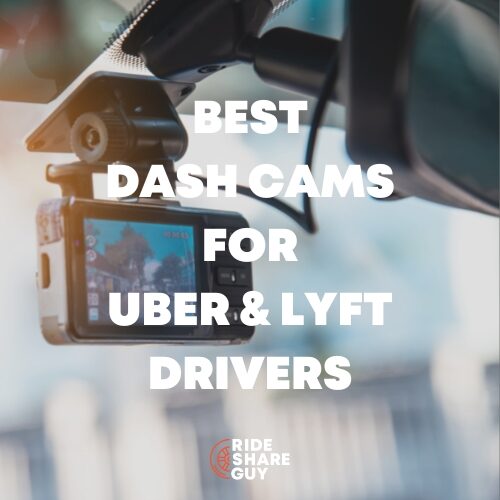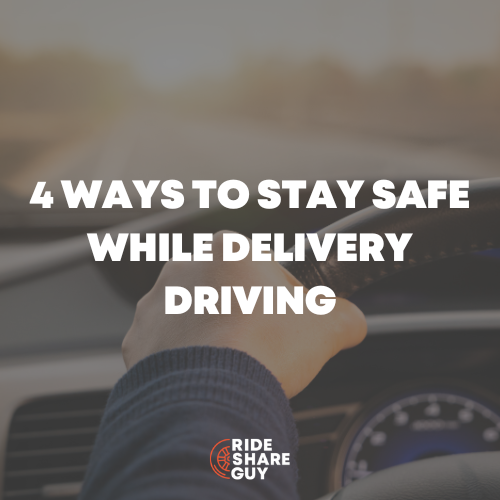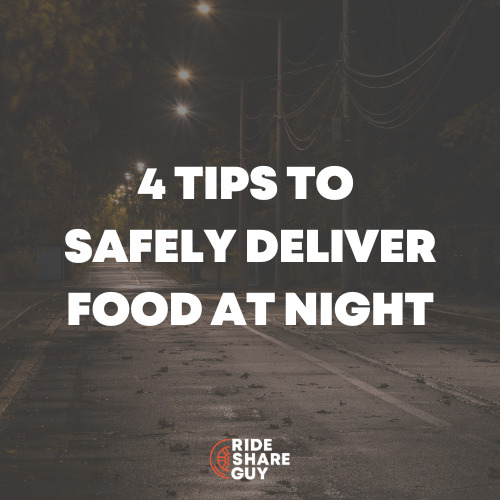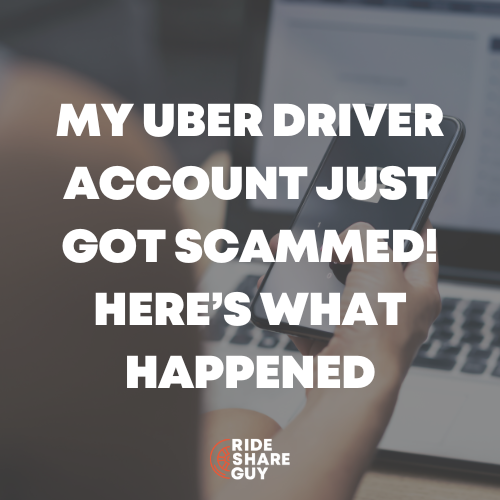The rise of ridesharing companies like Uber and Lyft has revolutionized transportation, providing a convenient and affordable option for millions of people worldwide.
But sometimes, the power dynamic between rideshare drivers and passengers can lead to situations where drivers feel vulnerable to violence, unwanted sexual attention, or discrimination.
Here are our best safety tips for Uber drivers. These strategies can transform the relationship between you and your riders and help you mitigate risk behind the wheel.
10 Safety Tips for Uber Drivers
- Know Your Surroundings
- Be Wary of Driving at Peak Crime Times
- Trust Your Instincts
- Take Self-Defense Classes
- Take Advantage of Technology
- Set Boundaries and Expectations for Riders
- Look Out for Carjackers
- Vet Passengers
- Park Wisely
- Protect Yourself and Your Riders
1. Know Your Surroundings
Drivers can be attacked from inside or outside of the car.
One time while driving through the Tenderloin district of San Francisco, a homeless person kicked my car and put a big dent in my door.
It’s important to be aware of which parts of town are safe and which are more prone to violence and attack.
Map out your city so you can avoid dangerous areas altogether or proceed with appropriate caution when you accept rides there.
2. Be Wary of Driving at Peak Crime Times
A 2017 study from the Sleep Judge analyzed over 840,000 crime reports to see when most crimes occur.
It found that the vast majority of violent crimes, like murder, sexual assaults, robberies, and DUIs, happen at night.
To avoid drunk riders and reduce the risk of falling victim to a violent crime, try to avoid driving late at night if at all possible.
3. Trust Your Instincts
I had a 5 AM pickup at a casino one week. A security guard came out, looked at my car, and waved at me to wait.
A few minutes later, he came out with the passenger, who proceeded to get something out of his own car in the parking lot.
At this point, my alarms went off. Something felt off, so I drove away. In these situations, it’s important to trust your gut.
Don’t hesitate to cancel a ride if you feel unsafe.
4. Take Self-Defense Classes
Additionally, rideshare drivers can consider taking self-defense classes or carrying pepper spray or another form of protection.
For instance, I carry pepper gel and a knife.
While you’ll hopefully never have to use any self-defense tools during an Uber ride, it’s important to be prepared to protect yourself just in case.
5. Take Advantage of Technology
According to Uber’s most recent safety report, 43% of sexual assaults reported in 2019 and 2020 were at the hands of riders.
One way rideshare drivers can protect themselves from unwanted sexual attention is to use technology to their advantage.
Many rideshare companies have introduced safety features that allow drivers to record audio or video of passengers in real time during their rides.
You can also take matters into your own hands by getting one of the best dashcams for rideshare drivers. Not only is a dashcam a deterrent, but it can also help provide evidence of abuse or threatening behavior.
The Rideshare Guy recommends this dash cam as the best:
6. Set Boundaries and Expectations for Riders
Unfortunately, drivers can be subjected to racism, discrimination, and other insulting behavior in the form of verbal abuse, harassment, or physical violence. To protect yourself, set clear boundaries with passengers.
Drunk passengers are the ones who say the most ignorant and insulting words. Establish rules around acceptable behavior in your car, such as not smoking or consuming alcohol.
You can also set expectations around language and behavior—make it clear that racist or abusive behavior will not be tolerated.
7. Look Out for Carjackers
In 2021, The Markup reported that Uber and Lyft drivers are being increasingly targeted by carjackers, with 11 rideshare drivers losing their lives to carjackings that year.
One way to shield yourself from this danger is to avoid driving the most commonly stolen cars in areas with high crime rates late at night.
8. Vet Passengers
One of my biggest driver safety tips is to evaluate your passengers before they get in the car.
Uber doesn’t vet riders as extensively as it does drivers, so you can’t rely on a background check to screen riders.
But you can use ratings from other drivers. As you decide whether or not to accept a ride, pay close attention to the rider’s rating.
If a rider has a poor rating from several drivers, picking them up might not be worth the risk.
9. Park Wisely
When you pick up a rider, it’s smart to have an exit strategy in place.
If you accepted a ride in an unfamiliar area, do a quick drive-by, note the entrance points, and position your car for an easy exit.
You should also park somewhere well-lit and stay in your car at all times for your personal safety.
10. Protect Yourself and Your Riders
Here are a few strategies you can use to ensure you and your rider get to their destination safely:
- Ask drivers to sit in the back seat and ensure they buckle their seatbelts.
- Buy a cell phone mount to keep your hands on the wheel and your eyes on the road.
- Avoid distractions like phone calls, notifications, or texts.
- Drop off riders in a safe spot away from heavy traffic.
How to Handle a Dangerous Situation
Despite your best efforts to avoid a safety incident, you can’t always control how riders behave.
If a rider is behaving erratically or showing signs of frustration, try your best to stay calm and de-escalate the situation. If that doesn’t work, drive to a safe public place and end the ride.
If a rider is aggressive and becomes physically violent, it’s important to remove yourself from the situation as quickly as possible and contact local authorities.
When you call 911 through the Uber app, you’ll be provided with details like your license plate number and live location to share with law enforcement dispatchers.
Above all, remember that staying safe and getting home to your loved ones should always be your main priority. Protecting yourself matters more than saving your car or belongings.
What Uber Can Do to Protect Drivers
Rideshare companies need to take action to protect their drivers.
According to Uber, here are a few of the steps the rideshare service has taken to protect its riders:
- Front-seat policy: Uber asks that riders only sit up front if their group is big enough to require it.
- Emergency button: This is the tool that calls authorities directly from the app and provides you with trip details.
- 24/7 incident report: Uber’s support team is available around the clock to help with safety concerns.
- RideCheck: Uber tracks all of its trips with GPS, and if you go far off-track, Uber will check in to ensure you’re safe and send help if you aren’t.
- Record My Ride: This pilot is in approximately a dozen major cities and enables drivers to use their front-facing camera to video record their ride. The recording is encrypted, and no one can view it unless the driver sends the video to Uber for review after an incident.
- Rider verification: This enhanced rider verification system compares details riders provide against verified data sources, ensuring a rider’s validity. Uber will soon start letting drivers know when a rider is a verified rider to enhance your safety.
- Clearer map lines: Uber instituted sharper route lines with map markers that are much easier to see, so you can clearly see the pick-up and drop-off locations.
- Android Auto integration: Uber partnered with Android Auto to make its app available on a car’s larger screen for more convenience and safety viewing information from the dashboard versus the phone.
- Clear trip information: Uber made its trip information easier to read and the action button more obvious so drivers don’t accidentally accept rides they don’t want.
- Real-time routing: Drivers can share real-time traffic and obstacle info in the app for other drivers. The app also grabs information from TomTom regarding crashes and lane closures to get alternate routes to save time.
Uber is also making reviews and accusations that result in deactivation fairer for drivers. Rather than putting drivers at the mercy of angry or fraudulent passengers who want a refund, drivers can now ask for a second review when facing deactivation. They can also share their own video or audio evidence to support their case.
In addition, Uber created new systems for customer complaints to ensure they are legit and not just to ‘get back at a driver’ while also allowing drug testing for drivers accused of drug abuse and facing permanent deactivation. The drug tests are conducted by LabCorp and covered by Uber.
But there are still more steps Uber can take to protect drivers, like implementing stricter policies around acceptable passenger behavior, and offering better training to drivers on how to handle difficult or dangerous situations.
Key Takeaways
One of the biggest issues for Uber and Lyft drivers is a lack of control over their passengers.
As a rideshare driver, you don’t have the same level of protection as traditional employees, nor are you covered by workers’ compensation or liability insurance. This dynamic can make drivers feel powerless in vulnerable situations.
However, by using technology to your advantage, setting clear boundaries, and taking steps to protect yourself physically, you can help mitigate these risks.
Additionally, it’s important for rideshare companies to take action to protect their drivers and ensure they feel safe and supported while providing their services.





